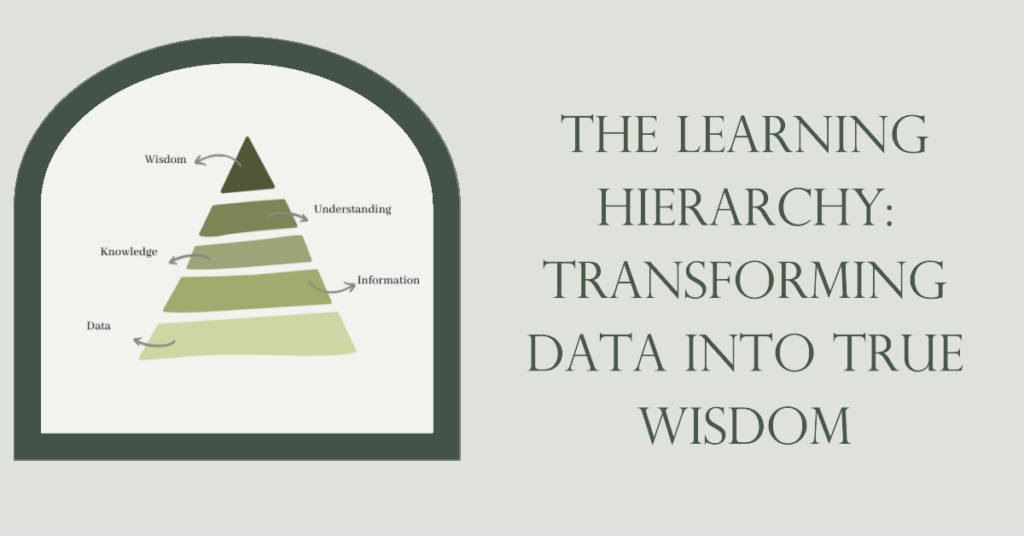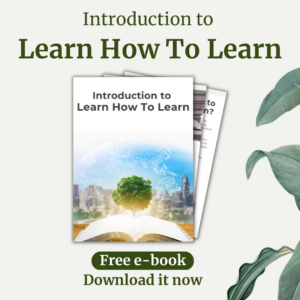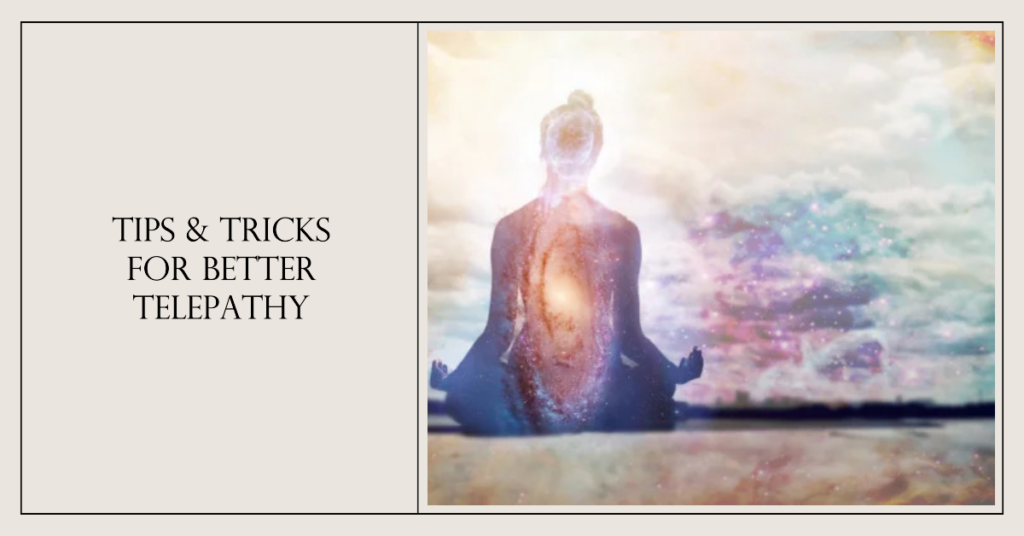The Learning Hierarchy: Transforming Data into True Wisdom

In a world where information is abundant and constantly evolving, mastering the art of learning and teaching is more important than ever. These powerful skills not only shape our ability to navigate the vast ocean of knowledge but also guide us in transforming raw data into true wisdom.
As we embark on a journey to unlock the secrets of the “Learning Hierarchy” and discover the two most powerful skills in life—how to learn and teach—we must venture beyond our comfort zones and dive deep into the realms of understanding, values, and purpose.
So, buckle up and get ready for an exhilarating adventure that will challenge your perceptions, reshape your mindset, and ultimately help you become an effective learner and teacher in this ever-changing world.
The Four Pillars of Learning
The ability to learn anything is based on four key elements:
- Purity of intent: Having a genuine desire and motivation to learn and grow is essential. With a pure intent, we can focus our efforts on acquiring knowledge and skills that will help us reach our goals.
- Focus of will: Developing the discipline and perseverance to stay committed to the learning process is crucial. A focused will enables us to overcome challenges and distractions that may arise during our learning journey.
- Level of awareness: Being aware of our strengths, weaknesses, and learning preferences allows us to tailor our learning strategies to our unique needs. A high level of awareness also enables us to recognize opportunities for growth and improvement.
- Quality of character: Possessing strong personal values and integrity is essential for effective learning. A solid character helps us stay true to our goals and maintain a growth mindset, even in the face of setbacks and failures.
Overcoming Obstacles to Learning
Two common obstacles can hinder our ability to learn effectively: “I knew that” and “I disagree.” These mental filters can prevent us from absorbing new information and expanding our perspectives. To overcome these barriers, it’s essential to maintain an open mind, recognizing that our understanding is always evolving and that there’s always more to learn.
The Theory of Relativity
The Theory of Relativity emphasizes the idea that all perspectives are partial, and we can never know everything there is to know. When we disagree with someone, it’s crucial to remain open to their perspective, as doing so may present us with new insights and help us grow.
Systematic Outrageousness
One way to foster a more open mindset is to become systematically outrageous, embracing the unconventional and challenging societal norms. This approach allows us to break free from our comfort zones, facilitating growth and learning.
Learning on the Edge of Your Comfort Zone
Real learning occurs when we push ourselves beyond our comfort zones, taking on new challenges and embracing unfamiliar experiences. Recognizing that we can’t know everything, it’s essential to select the knowledge and skills that will be most relevant to our goals and aspirations.
Defining Your Purpose
Determining what we want in life is a crucial step in deciding what we need to learn. By asking ourselves questions like “Who are we?”, “Where are we going?”, and “What do we want to get out of life?”, we can identify our purpose and select the most relevant knowledge and skills to acquire.
Logotherapy: The Power of ‘Why’
Logotherapy, a psychological theory, suggests that having a strong ‘why’ for living can help us endure almost any ‘how’. By identifying our core motivations and purpose, we can harness the power of ‘why’ to drive our learning and growth.
| Pillars of Learning and Key Principles | |
|---|---|
| Pillar/Principle | Description |
| Purity of intent | Genuine desire and motivation to learn |
| Focus of will | Discipline and perseverance in learning |
| Level of awareness | Understanding of one’s learning preferences and needs |
| Quality of character | Strong personal values and integrity |
| Theory of Relativity | Recognizing the partiality of perspectives and embracing new insights |
| Systematic Outrageousness | Embracing the unconventional and challenging norms |
| Learning on the Edge of Your Comfort Zone | Expanding horizons by pushing personal boundaries |
| Defining Your Purpose | Determining personal goals and aspirations |
| Logotherapy: The Power of ‘Why’ | Harnessing a strong ‘why’ for motivation and growth |
Understanding the Learning Hierarchy
Data
Data refers to the raw facts and figures that we collect from various sources. These can be numbers, words, images, or any other type of input. Data in itself lacks context and meaning, which makes it difficult to use directly for decision-making.
Information
Information is created when we process, organize, and analyze data. It provides context to the data, allowing us to make sense of it. Information helps us understand the relationships between different pieces of data, thereby providing the basis for making informed decisions.
Knowledge
Knowledge goes beyond information, as it represents the understanding of the underlying principles, concepts, and patterns found in information. Knowledge allows us to apply the information we have gathered in new and meaningful ways, making it an essential part of problem-solving and decision-making.
Understanding
Understanding is the ability to see the connections between various pieces of knowledge, allowing us to gain a more profound insight into a subject. It involves grasping the reasons behind certain patterns or principles and appreciating their implications in different contexts.
Wisdom
Wisdom is the highest level of the learning hierarchy. It is the ability to apply knowledge and understanding in a practical and meaningful way, taking into account the complexities and nuances of the real world. Wisdom involves using judgment and intuition, considering the long-term consequences of our actions, and recognizing the limitations of our knowledge.
| Stages of the Learning Hierarchy | |
|---|---|
| Stage | Description |
| Data | Raw, unprocessed facts and figures |
| Information | Organized and structured data |
| Knowledge | Meaningful insights derived from information |
| Understanding | Ability to interpret and apply knowledge |
| Wisdom | Judicious application of understanding with values and context |
The Role of Technology in the Learning Hierarchy
Technology has played a significant role in revolutionizing the way we learn and interact with information. From the internet, social media, and e-learning platforms to artificial intelligence (AI) and virtual reality (VR), technology has provided us with new avenues to access, process, and apply knowledge. For instance, Google Scholar offers a wealth of academic resources, while platforms like Coursera and Udemy provide a variety of online courses catering to different learning preferences.
Critical Thinking and the Learning Hierarchy
Critical thinking is an essential skill that helps us move up the Learning Hierarchy by enabling us to analyze, evaluate, and synthesize information. It involves questioning assumptions, seeking evidence, and identifying biases, ultimately leading to a more profound understanding and informed decision-making. Websites like Critical Thinking Web and Foundation for Critical Thinking offer valuable resources and strategies to improve critical thinking skills.
The Impact of Emotional Intelligence on the Learning Hierarchy
Emotional intelligence (EI) plays a crucial role in the Learning Hierarchy, as it influences our ability to regulate emotions, empathize with others, and effectively communicate. By developing EI, we can better manage stress, stay focused, and create a positive learning environment. Psychology Today and MindTools provide insights and tips on enhancing emotional intelligence for personal and professional growth.
The Connection Between Lifelong Learning and the Learning Hierarchy
Lifelong learning is the ongoing, voluntary pursuit of knowledge for personal or professional development. It enables us to continuously progress through the Learning Hierarchy, adapting to new situations and staying relevant in an ever-changing world. Organizations like The Open University and TED Talks offer free access to educational content, fostering a culture of lifelong learning and curiosity.
Developing Understanding Using the DIKW Pyramid
Pareto’s Principle (80/20 Rule)
Pareto’s Principle, also known as the 80/20 Rule, states that 80% of our results come from just 20% of our efforts. This principle demonstrates the importance of focusing on the most critical aspects of a task, rather than trying to learn everything. By identifying and prioritizing the most important information, we can maximize our productivity and effectiveness in achieving our goals.
The Importance of Prioritizing Learning
The Mind Prison
The “mind prison” is a state in which we focus too much on data and information, leading to a waste of energy and a decline in creativity. This mindset can make learning feel like a chore and hinder our ability to grasp the true value of knowledge and understanding. Instead of being trapped in the mind prison, we should seek out more engaging and effective ways to learn.
Finding Knowledge and Understanding
To break free from the mind prison and prioritize learning effectively, we should focus on acquiring knowledge and understanding rather than merely memorizing data and information. One way to do this is by seeking out mentorship or apprenticeship opportunities, where we can gain practical experience and learn from experts in our chosen field.
The Role of Values in Learning
Values play a critical role in the learning process, as they guide our decision-making and help us determine what is truly important. While schools often avoid teaching values, they are essential for shaping our understanding of the world and driving our actions. Disagreements and conflicts usually arise not from data, but from differing values and priorities.
Learning What Not to Learn
An essential aspect of effective learning is knowing what not to learn, as this allows us to focus on what truly matters and avoid wasting time on irrelevant information. By filtering out unnecessary data, we can keep our minds uncluttered and maintain a clear vision of the bigger picture.
The Concept of Feedback
Feedback is the information we receive as a result of a process, which can then be used to modify our approach and improve our performance. When we use feedback to adapt and change our methods, we engage in a process known as “learning.” Learning means that our future behavior will be different from our past actions, allowing us to grow and develop new strategies.
The Learning Process
Relaxation and Learning
Relaxation is a crucial component of the learning process, as it allows our minds to absorb information more effectively. The traditional “mind prison” approach to learning, which involves sitting still, remaining silent, and working hard, creates tension and hinders our ability to learn. By embracing relaxation and engaging in more mindful learning practices, we can enhance our understanding and retention of information.
Types of Memory
There are various types of memory, including different forms of visual and auditory memory. Recognizing the distinctions between these memory types can help us tailor our learning strategies to make the most of our cognitive abilities.
Detailed and Contextual Vision
Our eyes can perceive a small area in great detail, while the rest of our visual field is less detailed but still capable of detecting movement. This distinction between detailed and contextual vision plays a significant role in how we store and recall visual information. By focusing on the details within our visual field, we can encode and remember more information.
Detailed and Contextual Hearing
Similarly, our hearing can be divided into detailed and contextual modes. Contextual hearing allows us to pick up on the general mood or tonality of a voice, while detailed hearing focuses on the content of what is being said. By understanding these differences, we can enhance our listening skills and improve our ability to process auditory information.
Conclusion
In conclusion, the journey to becoming an effective learner and teacher is a continuous process that requires us to navigate the Learning Hierarchy, focusing on transforming data into wisdom and mastering the art of learning and teaching. By understanding the different stages of learning—data, information, knowledge, understanding, and wisdom—we can develop targeted strategies to maximize our growth.
Simultaneously, we must embrace the four pillars of learning, maintain an open mindset, and push ourselves beyond our comfort zones to reach our true potential. Through this holistic approach, we can overcome obstacles, refine our values, and define our purpose, enabling us to thrive in an ever-evolving world and pass on the invaluable currency of learning and teaching to others.
Frequently Asked Questions (FAQs)
1. What does it mean to learn?
Learning is the process of acquiring new knowledge, skills, or abilities through experience, study or being taught. It involves understanding, interpreting, and applying information in various contexts, leading to personal growth and development.
2. How do I teach myself to learn?
Teaching yourself to learn involves developing effective learning strategies, maintaining a growth mindset, and continuously reflecting on your progress. Focus on the four pillars of learning—purity of intent, focus of will, level of awareness, and quality of character—and cultivate an open-minded and curious approach to new information.
3. What is the most effective way to learn?
The most effective way to learn varies from person to person, as it depends on individual learning styles, preferences, and goals. However, some universal principles include breaking down complex topics into smaller components, using active learning techniques, staying consistent and focused, and seeking feedback for improvement.
4. How can I improve the way I learn?
To improve the way you learn, start by identifying your learning preferences and strengths. Then, establish clear goals and develop a learning plan that incorporates a variety of learning methods, such as reading, listening, practicing, and discussing. Reflect on your progress regularly, stay open to new perspectives, and don’t be afraid to make mistakes or ask for help.
5. What is the easiest way to learn anything?
The easiest way to learn anything involves breaking down the topic into manageable pieces, using multiple learning methods, and finding a learning approach that aligns with your personal preferences. Also, make connections between new information and your existing knowledge, and practice regularly to reinforce learning.
6. What is the fastest way to learn anything?
The fastest way to learn anything is to fully immerse yourself in the topic, dedicating focused time and effort to understanding and practicing the subject matter. Utilize active learning techniques, engage with the material from different perspectives, and seek out feedback to accelerate the learning process.
7. What is the easiest method to learn?
The easiest method to learn depends on your personal learning preferences. Some people find it easier to learn through visual aids, while others prefer auditory or kinesthetic methods. Experiment with various techniques, such as mind maps, flashcards, videos, and hands-on activities, to find the most effective learning approach for you.












Responses